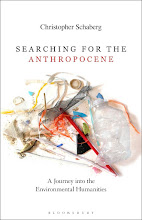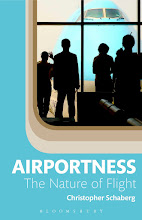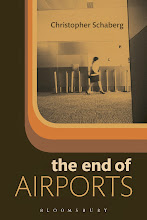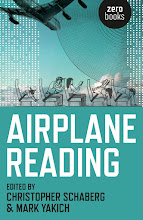Most mornings these days, I go for a walk to the Mississippi River with my small roommate, Julien. This morning I decided to record my walk by taking some photos that show the things we encountered along the way.

Julien doesn't walk yet, so I push him in this three-wheeled device.

In the humidity of New Orleans, the electricity lines buzz and crackle overhead.

This is one of my favorite houses in the neighborhood, designed and built by Chuck, who also lives in it. I love the juxtapositions of new and old architecture in the city, the traditional Victorian flourishes alongside modern angles and minimalist design.

I also have a thing for small houses, and I keep track of the small houses in the neighborhoods around town. (I generally think of a small house as under 1000 square feet, though I know this definition is debatable. But when dealing with New Orleans typologies, 1000 square feet and under makes for a useful measuring stick.)

Someone threw out a printer—including the paper.

Something about this house feels very
Lynchian, to use a term coined by David Foster Wallace.

Perhaps it's that across the street from the Lynchian house there is a nameless, brick-walled compound with a subdued screaming generator somewhere inside, and a sign on a metal door that says WARNING: 13,800 VOLTS.

Here is another small house; note the toilet on the front porch.

I'm thinking about tennis a lot these days because I'm teaching a seminar on David Foster Wallace, for whom the tennis court becomes an intense ecotone, and the human player a migratory species.

Finally we reach the river. We pass an empty Abita box. There's a guy with his fishing rods set up on the old skeleton of a barge below the rip rap. The other day we saw a dead catfish on the river bank; it was the size of a cinder block. The wild roosters aren't around today. Sometimes they are pecking at the remains of crawfish boils from the night before. It's quiet this morning—no boats go by.

Usually we see tankers and tugs pushing barges. This morning as we pass, the water is flat and empty. Upriver, boats are loading.

We cross over the railroad tracks just as a freight train approaches.

Julien points out each car as it passes.

One car carries what appears to be an important message.

Walking back down Magazine St., now. I like how this company is called "Pothole Killers": as if they conceive of potholes as vibrant things that can be killed...or, on the other hand, maintained & cultivated. It is an ordinary, found example of what the philosopher Jane Bennett calls "
vital materialism."

Speaking of ecology, the sunlight looks liquid coming through the big oaks festooned with Spanish Moss in Audubon Park.

Julien likes to feel the stringy bromeliads that hang down to where he can reach them.

A
mysterious new boutique is about to open on Magazine St.

Interesting headline on the front page of the USA Today.

Almost back home—but first, a quick stop at the best espresso joint in town.































































